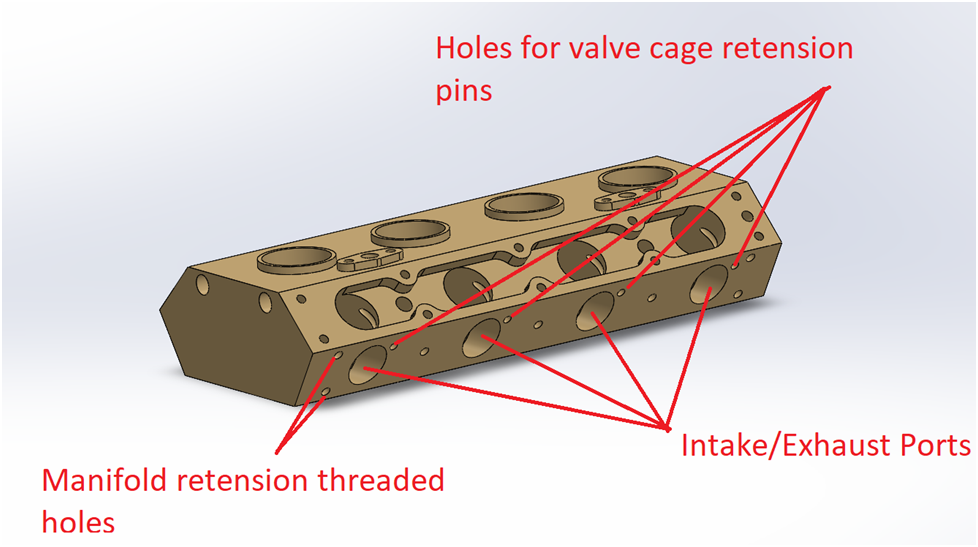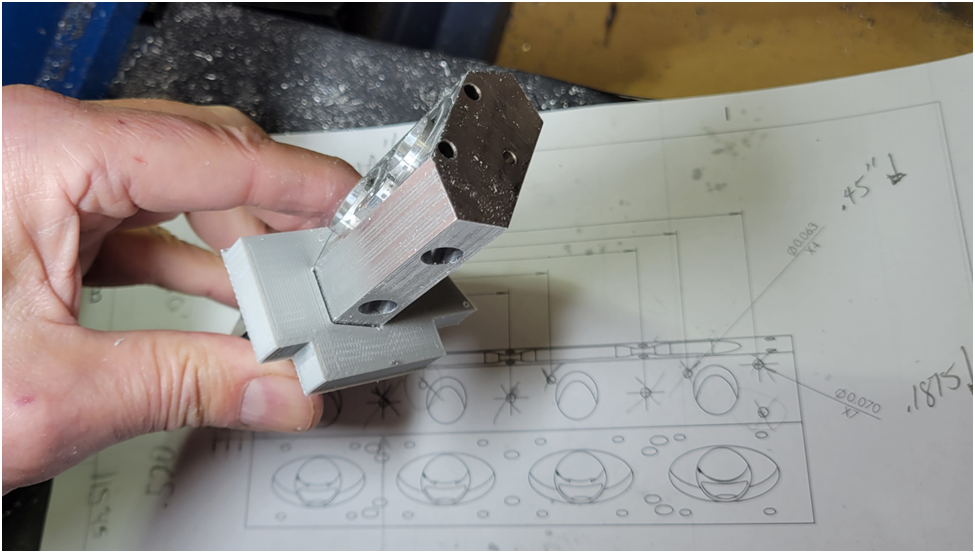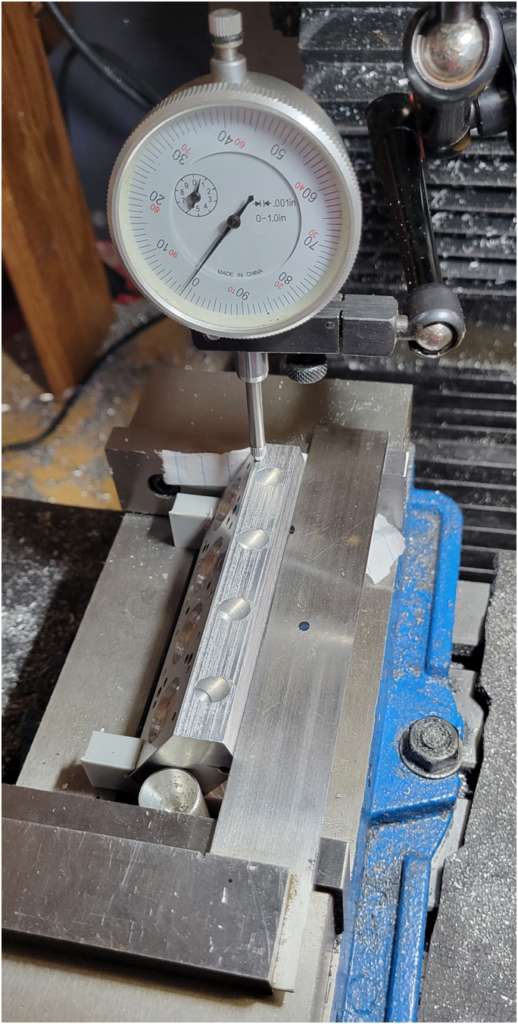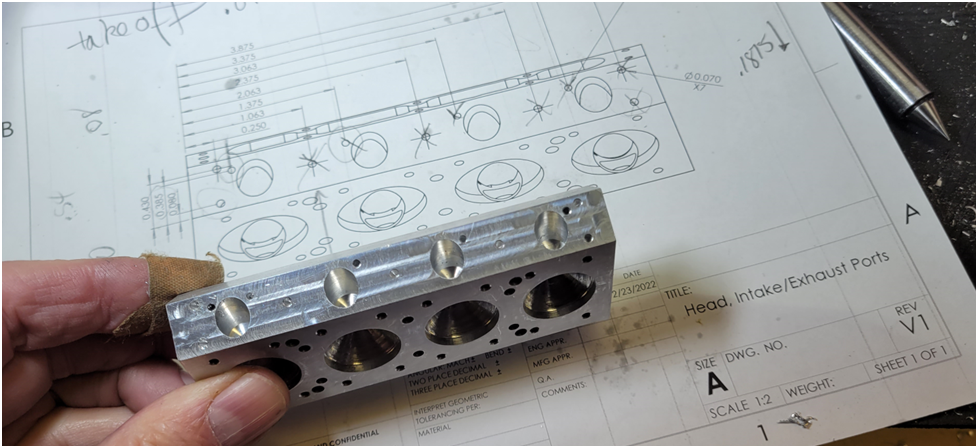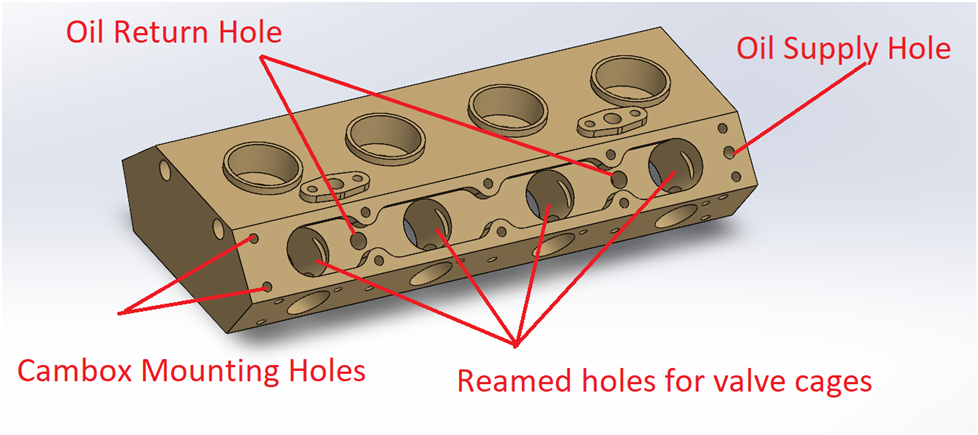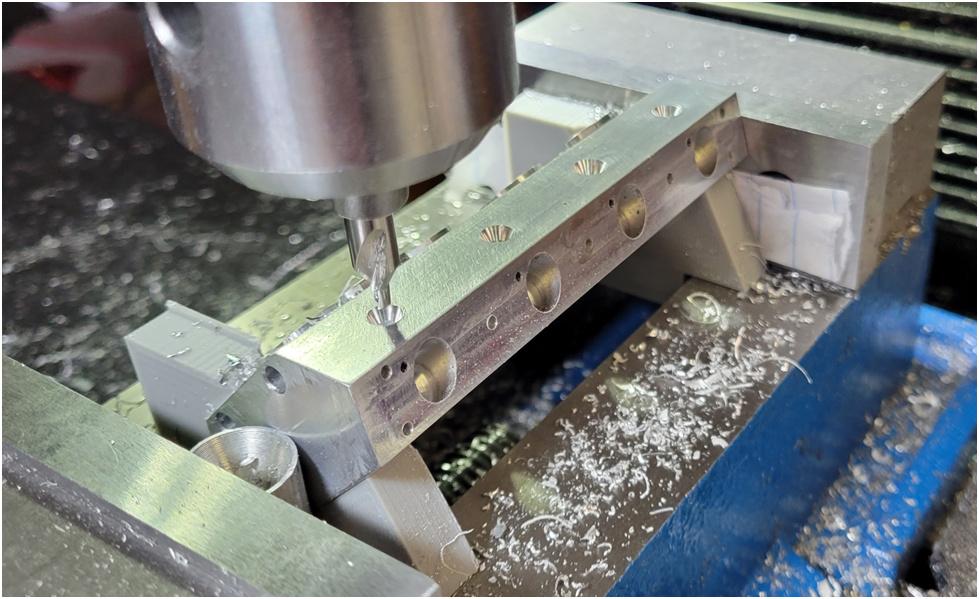I am starting a new build of the Offenhauser 97 Cubic Inch "Might Midget" Model Engine.

The midget motorsports craze of the 1930s and 1940s not only served as a launch pad for many drivers who'd go on to successful racing careers, it also ended up keeping afloat one of the greatest companies in American motorsports history via the Offenhauser midget engine.
Not a year after Fred Offenhauser took over the operations of his former employer, engine builder Harry A. Miller -- which consisted mainly of casting, machining, and selling racing parts, and rebuilding truck engines -- a new business opportunity arose in the summer of 1934. Midget racing had taken the country by storm, offering cheap thrills for spectators and drivers alike in the depths of the Depression. Organizers soon capitalized on the new motorsport's popularity by building dedicated tracks around the country.
One of those promoters, Los Angeles-based Earl Gilmore, grew dismayed with the frequent breakdowns and the unruly nature of the miscellaneous motorcycle, junkyard, and cut-down engines that powered the cars racing at his stadium, so he turned to Offenhauser for help.
"(The unreliable engines) made it difficult to run a show," Gordon Eliot White wrote in Offenhauser: The Legendary Racing Engine and the Men Who Built It. "His patience exhausted, Gilmore sent his manager, David Koetzla, to see Fred Offenhauser about building a real racing engine for the little cars."
Offenhauser didn't have anything on hand at the moment, but he and Leo Goossen, the longtime draftsman for Miller's creations and their successors, pulled up the plans for the 183-cu.in. straight-eight that Miller built for Harry Hartz's 1932 Indianapolis 500-winning entry and decided to cut it in half to make a 97-cu.in. four-cylinder. As White described the engine's construction:
The 183 was, as Millers went, relatively simple, that is, inexpensive. It had two valves per cylinder and was unsupercharged. Using half of the 183's crankshaft left the midget engine with only three main bearings but it seemed to work alright."
In addition, Miller had designed the 183 as essentially two four-cylinder engines sharing a common crankcase so, White conjectured, "Offenhauser could use 183 blocks already on hand, or at least casting patterns for the Hartz engine."
With not much turnaround time, Offenhauser had the first midget engine ready in time for Curly Wetteroth to place it in his midget chassis and subsequently hand the completed car off to Curly Mills for its debut in late September 1934. Mills not only won that race, he also reportedly won his next 16 races.
Though the five total engines he built that first year seems like small potatoes, he charged about $1,100 per engine, roughly the equivalent of $20,000 today. "Fred had a healthy profit margin on them, and with the help of those midget sales, the firm cleared $18,000 for the year," White wrote. "They kept him in business."
Perhaps just as importantly, the midget engine sales -- White counted at least 180 during the time that Offenhauser ran the company -- allowed Offenhauser to develop the larger engines that would go on to dominate Indy and many other forms of motorsport for decades to come.
When Offenhauser decided to retire shortly after the end of World War II, Louis Meyer and Dale Drake bought out his business in 1946 and continued offering the midget engine until about 1974. While it didn't sell in great numbers -- White recorded serial numbers up to 450 or so -- it remained popular and powerful enough to warrant continued development through the decades. Meyer and Drake, in fact, sold most of their midget engines as 102-cu.in. variants and even offered the engine in displacements as large as 111 cubic inches.
---------------------------------------
I have created a 3D Model of the early 97-cu.in. version and am working on a set of plans for this historic engine.

I am building what is really a prototype of a never before built model. I am starting as is tradition with the crankcase. The crankcase is split into two halves held together with 4-40 screws hidden behind the crankcase side covers.
I started by squaring up the two work pieces in the mill, then moved them to the CNC router to machine the insides. I also machined what I am calling a "dummy crankshaft". It will allow me to check the bores in the crankcase. The crankshaft is supported at the ends by a pair of ball bearings and in the center by a bronze bush. Its fabrication was a straight forward set of operations on the lathe. I slowly brought the ball bearing surfaces to dimension to insure a tight fit. The front end of the crankshaft will hold the timing pinion and a starter dog. The rear end of the crankshaft will hold the flywheel.

Below is a photo of the top and bottom crankcase halves with the internal machining complete.

The crankcase is about 4 1/2 inches long and 2 inches wide. If you look closely you can see that the top left and bottom right screw holes have a locating hollow pin surounding the mounting screw that perfectly aligns the two crankcase halves. All of the machining on the inside, including the ball bearing holder surfaces and the locating pins, were performed in one setup. The machining time for the crankcase top was 1 hour and 32 minutes while the machining time for the bottom half was just under 2 hours.

When I machined the bottom crankcase half, I took an extra .010" off the top surface to allow for a Teflon (PTFE sheet) gasket. I then assembled the two halves with this gasket material in place. The rest of the crankcase outside machining will be performed with the two halves screwed together like this.


I plan to machine the front and rear of the crankcase next so I can test fit the dummy crankshaft. I may leave the machining of the sides and bottom of the crankcase for later as it will be easier to work with as a solid block.

The midget motorsports craze of the 1930s and 1940s not only served as a launch pad for many drivers who'd go on to successful racing careers, it also ended up keeping afloat one of the greatest companies in American motorsports history via the Offenhauser midget engine.
Not a year after Fred Offenhauser took over the operations of his former employer, engine builder Harry A. Miller -- which consisted mainly of casting, machining, and selling racing parts, and rebuilding truck engines -- a new business opportunity arose in the summer of 1934. Midget racing had taken the country by storm, offering cheap thrills for spectators and drivers alike in the depths of the Depression. Organizers soon capitalized on the new motorsport's popularity by building dedicated tracks around the country.
One of those promoters, Los Angeles-based Earl Gilmore, grew dismayed with the frequent breakdowns and the unruly nature of the miscellaneous motorcycle, junkyard, and cut-down engines that powered the cars racing at his stadium, so he turned to Offenhauser for help.
"(The unreliable engines) made it difficult to run a show," Gordon Eliot White wrote in Offenhauser: The Legendary Racing Engine and the Men Who Built It. "His patience exhausted, Gilmore sent his manager, David Koetzla, to see Fred Offenhauser about building a real racing engine for the little cars."
Offenhauser didn't have anything on hand at the moment, but he and Leo Goossen, the longtime draftsman for Miller's creations and their successors, pulled up the plans for the 183-cu.in. straight-eight that Miller built for Harry Hartz's 1932 Indianapolis 500-winning entry and decided to cut it in half to make a 97-cu.in. four-cylinder. As White described the engine's construction:
The 183 was, as Millers went, relatively simple, that is, inexpensive. It had two valves per cylinder and was unsupercharged. Using half of the 183's crankshaft left the midget engine with only three main bearings but it seemed to work alright."
In addition, Miller had designed the 183 as essentially two four-cylinder engines sharing a common crankcase so, White conjectured, "Offenhauser could use 183 blocks already on hand, or at least casting patterns for the Hartz engine."
With not much turnaround time, Offenhauser had the first midget engine ready in time for Curly Wetteroth to place it in his midget chassis and subsequently hand the completed car off to Curly Mills for its debut in late September 1934. Mills not only won that race, he also reportedly won his next 16 races.
Though the five total engines he built that first year seems like small potatoes, he charged about $1,100 per engine, roughly the equivalent of $20,000 today. "Fred had a healthy profit margin on them, and with the help of those midget sales, the firm cleared $18,000 for the year," White wrote. "They kept him in business."
Perhaps just as importantly, the midget engine sales -- White counted at least 180 during the time that Offenhauser ran the company -- allowed Offenhauser to develop the larger engines that would go on to dominate Indy and many other forms of motorsport for decades to come.
When Offenhauser decided to retire shortly after the end of World War II, Louis Meyer and Dale Drake bought out his business in 1946 and continued offering the midget engine until about 1974. While it didn't sell in great numbers -- White recorded serial numbers up to 450 or so -- it remained popular and powerful enough to warrant continued development through the decades. Meyer and Drake, in fact, sold most of their midget engines as 102-cu.in. variants and even offered the engine in displacements as large as 111 cubic inches.
---------------------------------------
I have created a 3D Model of the early 97-cu.in. version and am working on a set of plans for this historic engine.

I am building what is really a prototype of a never before built model. I am starting as is tradition with the crankcase. The crankcase is split into two halves held together with 4-40 screws hidden behind the crankcase side covers.
I started by squaring up the two work pieces in the mill, then moved them to the CNC router to machine the insides. I also machined what I am calling a "dummy crankshaft". It will allow me to check the bores in the crankcase. The crankshaft is supported at the ends by a pair of ball bearings and in the center by a bronze bush. Its fabrication was a straight forward set of operations on the lathe. I slowly brought the ball bearing surfaces to dimension to insure a tight fit. The front end of the crankshaft will hold the timing pinion and a starter dog. The rear end of the crankshaft will hold the flywheel.

Below is a photo of the top and bottom crankcase halves with the internal machining complete.

The crankcase is about 4 1/2 inches long and 2 inches wide. If you look closely you can see that the top left and bottom right screw holes have a locating hollow pin surounding the mounting screw that perfectly aligns the two crankcase halves. All of the machining on the inside, including the ball bearing holder surfaces and the locating pins, were performed in one setup. The machining time for the crankcase top was 1 hour and 32 minutes while the machining time for the bottom half was just under 2 hours.

When I machined the bottom crankcase half, I took an extra .010" off the top surface to allow for a Teflon (PTFE sheet) gasket. I then assembled the two halves with this gasket material in place. The rest of the crankcase outside machining will be performed with the two halves screwed together like this.


I plan to machine the front and rear of the crankcase next so I can test fit the dummy crankshaft. I may leave the machining of the sides and bottom of the crankcase for later as it will be easier to work with as a solid block.




































































